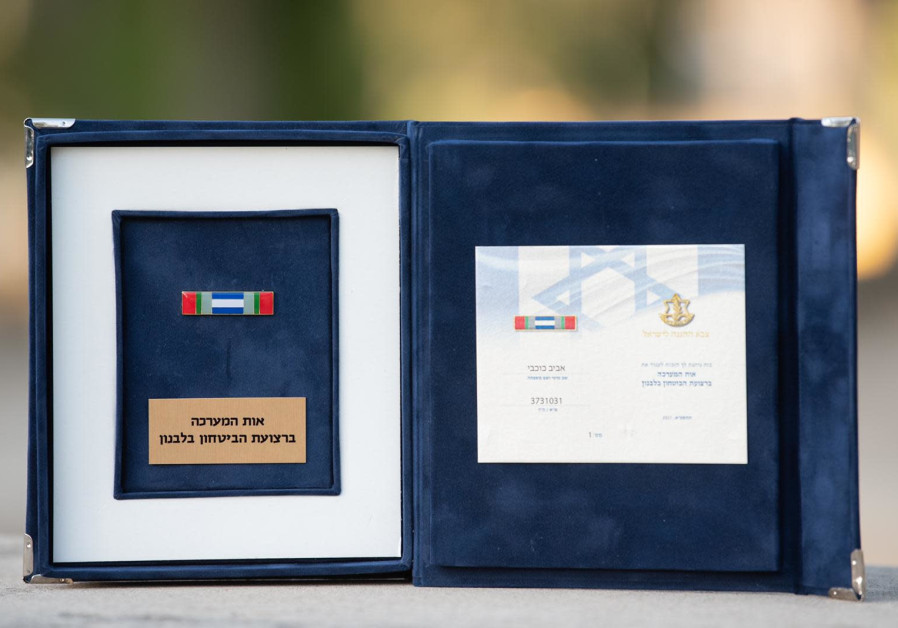What Gaza experienced in the last round of fighting was just “the tip of the iceberg,” Defense Minister Benny Gantz said Monday night during a ceremony to officially recognize Israel’s 18-year occupation of Southern Lebanon as an official military campaign.“Lebanon needs to know that what Gaza experienced a few weeks ago is just the tip of the iceberg,” he said, adding that Israel would always be ready to fight to protect its citizens.Should a war break out with Lebanon, it “will start in Lebanon and will take place mainly in enemy territory, and the damage will be enormous, painful and expensive,” Gantz said.But, should Lebanon have a leadership “that wants it, it is possible to put an end to decades of fighting that has never stopped,” he said. “It is possible to bring about economic cooperation, neighborly relations between people and even peace.”The ceremony was held in the presence of Gantz, IDF Chief of Staff Lt.-Gen. Aviv Kohavi, former IDF chief of staff Shaul Mofaz, who oversaw the withdrawal, and other senior officers.The decision to recognize the campaign was approved in March following a committee led by Mofaz, with the period officially known as the “Security Zone in Lebanon Campaign,” putting it on par with other wars and major operations fought by the IDF.

With the official recognition of the campaign, a total of nine have been recognized by the IDF: the 1948 War of Independence, the 1956 Sinai War, the 1967 Six Day War, the 1967-1970 War of Attrition, the 1973 Yom Kippur War, the 1982 First Lebanon War, the 2006 Second Lebanon War and the 2014 Operation Protective Edge in Gaza.Soldiers first entered Lebanon in 1978 to root out Palestinian terrorists. While the military withdrew from most of the country in 1985, it kept control of a 1,000-sq.km. security zone 20 km. deep until 2000 to prevent terrorist attacks, which had plagued the civilians of the North in the 1970s and ’80s.Though official numbers put IDF casualties at 256 – with roughly two dozen soldiers killed per year – the unofficial number stands at 675. That number does not include those who were wounded during their time in Lebanon, and it does not take into account all those who came back with psychological wounds.The First Lebanon War and the IDF’s time in the security zone in Southern Lebanon “shaped the northern arena and to a large extent radiated and influenced the entire Middle East,” Kohavi said at the ceremony.“But long years of operational activity also shaped generations of soldiers and commanders, shaping units, norms and methods of operation,” he said. “For the generation of commanders that I and the members of the General Staff belong to, Lebanon was our school for war. She was as sharp as a sharpened knife, from time to time wounding us. But most of the time we were sharpened on her blade. There we developed combat methods, faced a changing battlefield and developed anti-guerrilla fighting methods.”The ceremony and the campaign pin “are not just an external sign,” Kohavi said, adding that they “embody appreciation and respect” as well as a “national and moral obligation” by the State of Israel for those who served there.Brig.-Gen. Zahi Hefetz, a human-resources officer and the head of the Casualty Assistance Brigade, told The Jerusalem Post thousands of former soldiers and officers, as well as bereaved families and former South Lebanon Army soldiers, will get the pin.“This recognizes the campaign and the soldiers who defended the people who live in the North,” he said, adding that “even 21 years later we are hearing the stories from the soldiers, from those who were injured and from the bereaved families.”According to Lt.-Col. Hadas Mizrachi, the pin will be given to everyone who served in the security belt or those who directly helped the campaign between September 30, 1982, to May 24, 2000. It will be awarded to soldiers, officers, IDF employees and SLA personnel who fought alongside Israeli soldiers. It will also be given to bereaved families who lost loved ones during the campaign.The ceremony and the pin “is an opportunity to recognize those who served as well as those who fell or were injured, both mentally and physically, and their families,” she said.Mizrachi has been working on the pin since the decision was made.Every campaign pin is unique, and “every color has a meaning,” she told the Post.“The colors in the middle are blue and white, symbolizing the flag of Israel,” Mizrachi said. “On the side is gray, which symbolizes the long, drawn-out campaign, and the color of the outposts in the belt on the side of the gray is green, which symbolizes fighting in wooded areas. And then there’s red, which symbolizes those who were injured... the green and red also symbolize the colors of the Lebanese flag.”The ceremony on Monday is only symbolic, and it will take two months for all who are eligible to receive the pin. It will be given out starting next week, beginning with those who are still career officers who served in the campaign or directly helped.SLA soldiers will have their own unique ceremony to receive the pin. Those who are still in the reserves will receive it next during unit ceremonies, followed by those who no longer serve, whose pins will be sent to their homes by the Israel Postal Company.
